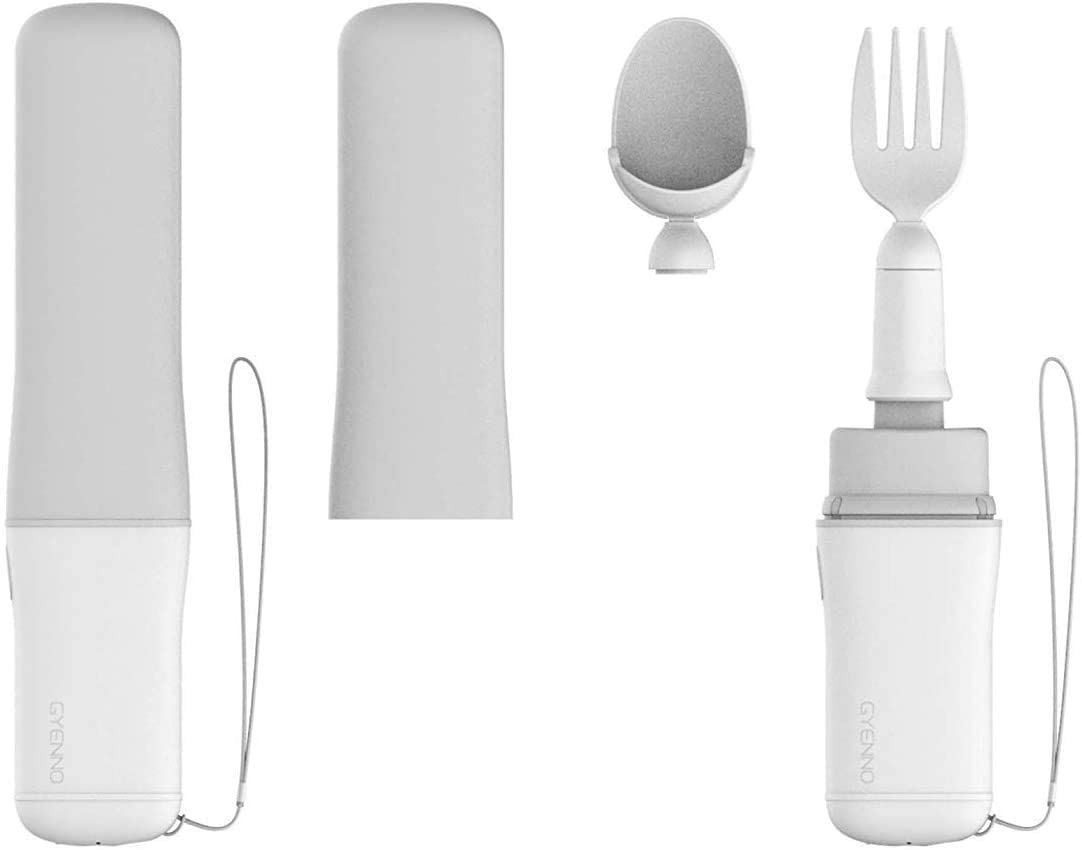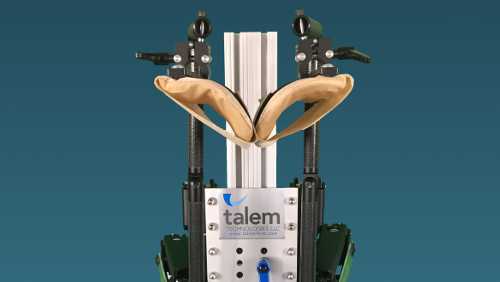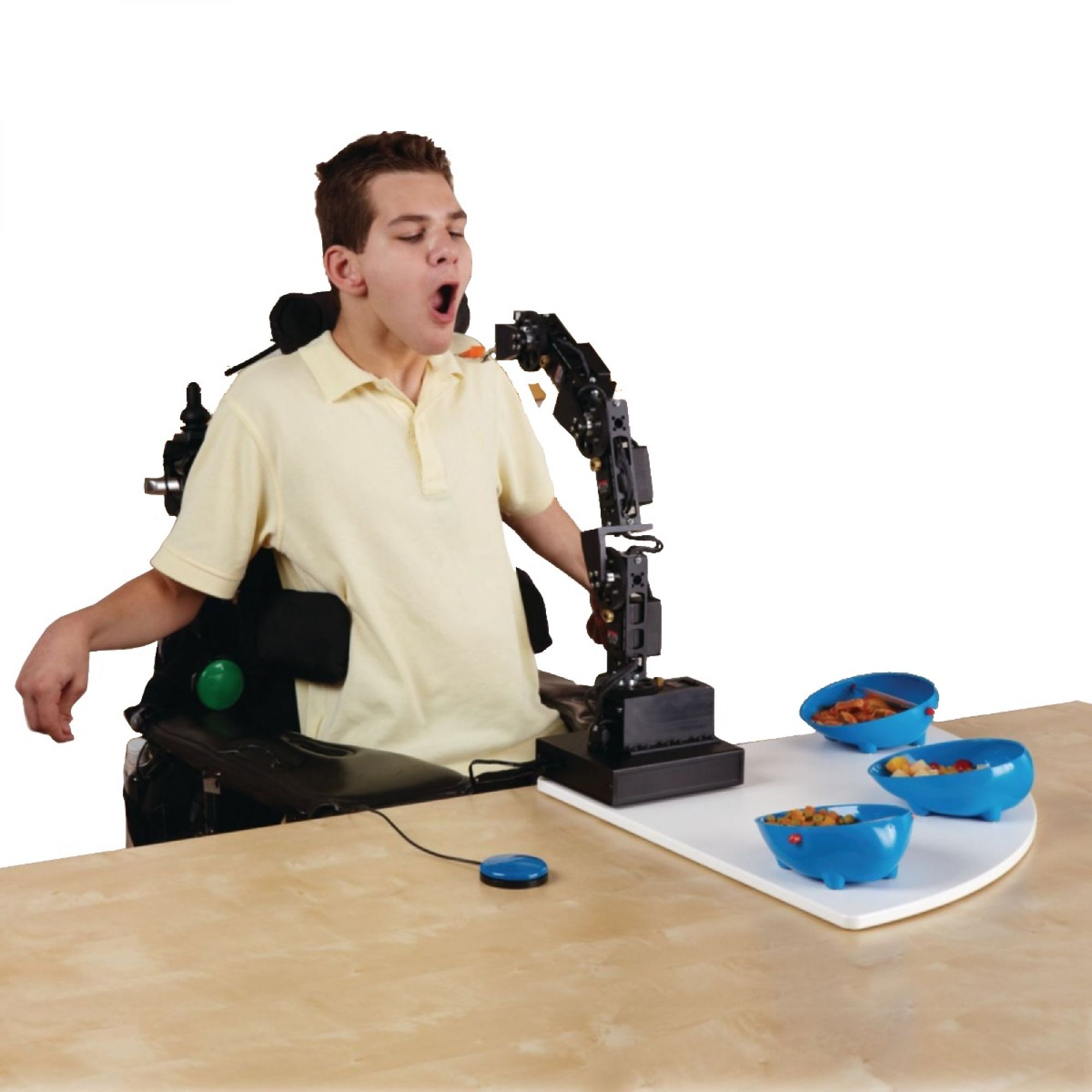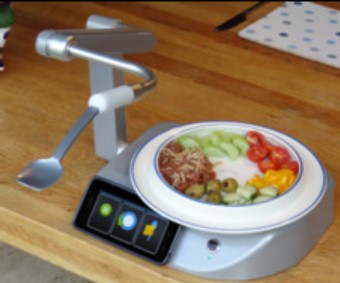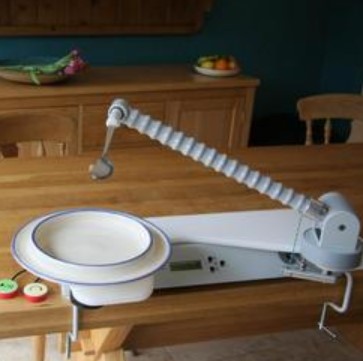For many of us, mealtime is a time to decompress, to slow down and enjoy the comfort that comes from the flavours and textures of familiar foods. In stressful and uncertain times, what we eat and how we eat it can provide us with an insulating sense of control. For people who struggle with limited, unstable or complete loss of upper limb mobility, eating is often a dependency relationship. The enjoyment and safety of each mealtime depends on the stress, moods and schedules of two individuals. In the midst of a pandemic, prolonged face-to-face close contact with caregivers during mealtimes puts individuals with disabilities at increased risk. With lockdowns and physical distancing the importance of mealtime independence has become increasingly important for people with disabilities.
There have been incredible advancements in Assistive Devices that can help vulnerable people regain independence while isolated. With an estimated one billion people worldwide in need of an assistive device and predicted growth of the assistive devices market to $30B USD by 2024, there is no shortage of technology available to help keep people of all abilities independent, and safe, at home during these uncertain times.
This article explores innovations for eating independence. Living with a disability shouldn’t exclude you from the reassurance a good meal can provide during a pandemic, here are three devices that can help bring the joy back to the dinner table.
The EliSpoon
Adaptive utensils have taken a huge step in recent years – moving from simple, weighted silverware to advanced, intelligent, electro-mechanical designs like the highly rated Gyenno Anti-Tremor Spoon or Verily’s Liftware that sense and adapt to tremors as they happen. The EliSpoon combines most of the adaptive features of its high-tech counterparts with a simple, electronics-free design and at half the price! Its design is free of motors or batteries, instead it uses a combination of counter-weights and rotational features to keep the spoon’s bowl level regardless of twists, bends, or shakes. It’s a great design for those with limited or unstable upper limb mobility; including those living with Cerebral Palsy, spinal cord injury, Parkinson’s disease, Multiple Sclerosis or essential tremor. While its anti-tremor features fall just short of those offered by the more advanced products, the low cost of the EliSpoon makes it an accessible option for those wanting to increase mealtime independence.
Check out the EliSpoon device page for more product details, pricing, user ratings and reviews, and options for purchasing.
GYENNO steady spoon electronically stabilizes so the attached utensil shakes 85% less than your hand.
USAGE RANGE: If your hand vibration amplitude is within 7cm/2.8inch, GYENNO SPOON can help you at the best. Otherwise, the effect will not be obvious.
Designed to accommodate limited hand and arm mobility. The handle includes built-in sensors, a computer, and motors. The soup spoon attachment connects to the stabilizing handle, holds about 1 tablespoon (15mL) of liquid, and can pick up food such as soups, cereals and other liquids.
$95.00
The ELISpoon enables independent eating for people with limited or unstable hand or arm movement, such as those living with cerebral palsy, spinal cord injury, Parkinson’s disease, multiple sclerosis or essential tremor.
The Maestro Dynamic Arm Support
For those affected by weak or frail upper limbs – rather than unstable movement – the dynamic Maestro exoskeleton arm from Talem Technologies is one of the most innovative devices on the market. The base model uses an electronics-free design to offset the pull of gravity on one’s arms and shoulders. It then uses a simple spring system to amplify the limited strength the user still has available. It’s not well-suited for those who suffer from tremors or erratic motion – as the design will amplify those movements as well – but the Maestro will return near full-range of motion for those with near zero upper limb mobility. The device is available in three different configurations, depending on the user’s needs: a low-cost table-mounted system (the Maestro Dynamic Arm Support ), a mid-tier all-in-one rolling stand-table-arm assembly (the Maestro Rehab), or a higher-end wheelchair-mounted version that uses a powered adaptor to intelligently level itself as the chair encounters inclines or the user tilts their seating position (the Maestro Mobile).
As a bonus, The Maestro isn’t just an eating aid. It offers individuals versatile support for many activities like turning pages in their favourite books, using touch screens, assisting with therapeutic stretching, or simply waving hello to a friend. Check out the Maestro Dynamic Arm Support Page for more product details, pricing, user ratings and reviews, and options for purchasing.
The Maestro Dynamic Arm Support lessens the pull of gravity on a patient’s arms, allowing them to work longer without fatigue. With industry-leading range of motion, Maestro helps return freedom to patients with injuries and neuromuscular challenges. Its table-mounted design makes this device portable and simple to setup and take down in seconds so that the Maestro can follow you wherever you need it: At home, at work, or just to play cards with firends!
OBI Robotic Dining Companion
OBI is designed for those with complete loss of upper limb movement, but who still retain the ability to safely chew and swallow.
It combines a simple set-up with state-of-the-art robotic technology. The device intelligently cycles through the four dishwasher-safe bowls, feeding the user from a comfortable position at the push of a button. The Obi includes standard input ports allowing for control by any standard access switch, such as Buddy Buttons or a head array. Obi’s advanced intelligence system allows it to scoop from varying directions ensuring it captures every bit of food from the bowl for the user. It’s design includes removable, dishwasher-safe bowls and multiple spoon options. It is lightweight (less than 8lbs) with a small setup footprint for increased portability and offers a stylish and sleek design. While The Obi is quite expensive it is more widely available for purchase and offers superior function and features to it’s less expensive competitor the Neater Eater.
Check out the Obi Robotic Eating Device Page for more product details, pricing, user ratings and reviews, and options for purchasing.
The Meal Buddy combines robotic technology and personal features to create an electronic assistive feeder that’s truly original.
Robotic Neater Eater can be used by anyone who can chew and swallow, allowing for greater independence, dignity and choice when it comes to meal times. Multiple programme options to suit users needs with the option of tablet app touch screen operation or switch interface.
$3,735.00
Neater Eaters enable people to use their own movements to feed themselves.
Neater Eaters are easy to use and are packed with features and accessories adaptable for people with a very wide range of abilities and needs.

